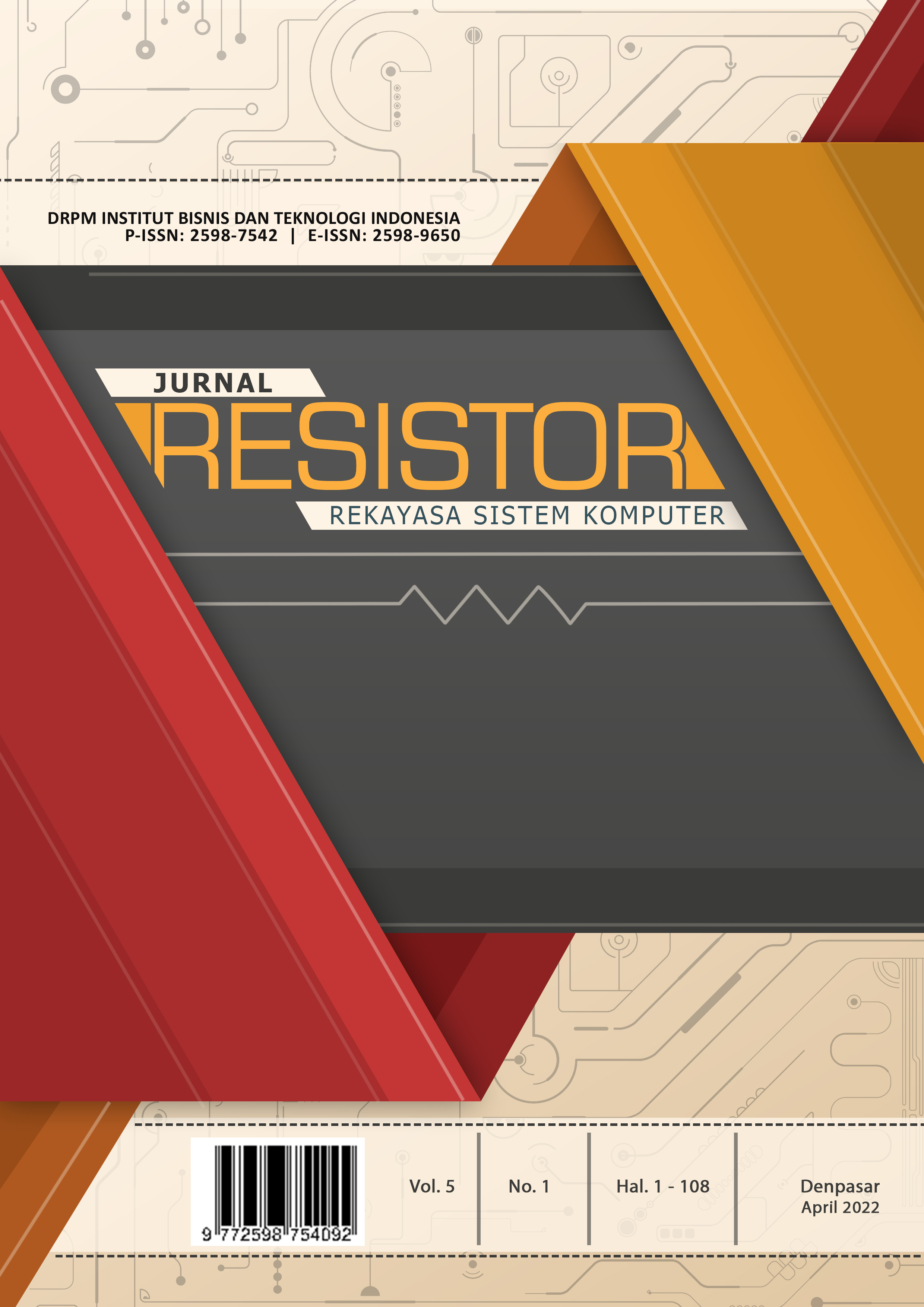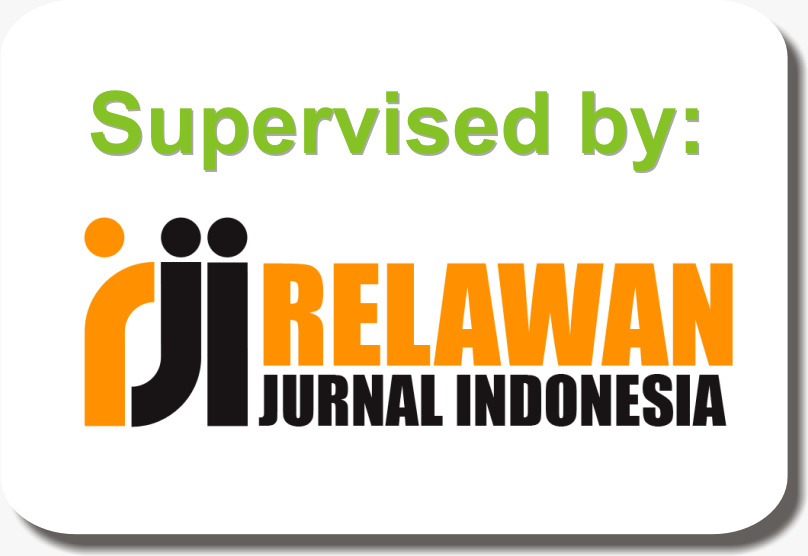RANCANG BANGUN CHILLER BERBASIS MIKROKONTROLER UNTUK EVAPORASI SENYAWA BAHAN ALAM
DOI:
https://doi.org/10.31598/jurnalresistor.v5i1.1082Keywords:
chiller, evaporation, microcontrollerAbstract
Chemical analysis uses a variety of solvents based on their level of polarity, such as non-polar, semipolar, and polar solvents. The solvent is used in the extraction process, both liquid-liquid extraction and solid-liquid extraction. Common extractions carried out in the fields of chemistry, pharmacy and other health sciences are solid-liquid extraction using samples in the form of simplicia from plants that are dried so that they become simplicia. Simplicia extracted with solvent. Extraction is carried out to concentrate the active compound and separate the solvent, so that it can be reused. Concentration was carried out using a rotary evaporator. A chiller-based rotary evaporator, namely a microcontroller-based chiller, is designed to accelerate temperature reduction, so that the evaporation and condensation process with the condenser is faster. Based on the results of the study, it was concluded that the chiller that was made was able to reduce the temperature of the water connected to the condenser section of the rotary evaporator and the heat from the waterbath with the duration of decreasing the temperature in the inlet-outlet reservoir between 183±2.88 seconds to 302±2.52 seconds from a water bath temperature of 40-600C.
References
Departemen Kesehatan Republik Indonesia, Parameter Standar Umum Ekstrak Tumbuhan dan Obat. Jakarta: Direktorat Jendral POM-Depkes RI, 2002.
R. Octiviani, T. A. Zaharah, and P. Ardiningsih, “Aktivitas Antibakteri dan Antioksidan Ekstrak dan Fraksi Metanol Kulit Kayu Batang Sukun ( Artocarpus altilis Park ) yang Tersalut,” J. Kim. Khatulistiwa, vol. 8, no. 2, pp. 34–40, 2019.
M. Isnaini and W. P. Ningrum, “Hubungan Keterampilan Representasi Terhadap Pemahaman Konsep Kimia Oragnik,” Univ. Islam Negeri Raden Fatah Palembang, pp. 12–25, 2018.
I. K. Lasia, “Analisis pengetahuan mahasiswa tentang dampak penggunaan bahan kimia,” Pros. Semin. Nas. FMIPA UNDIKSHA III, vol. 21, pp. 148–152, 2013.
Chang and Raymond, Kimia Dasar: Konsep-Konsep Inti, Edisi Keti. Jakarta: Erlangga.
I. G. Gandjar and A. Rochman, Kimia Farmasi Analisis. Yogyakarta: Pustaka Pelajar, 2007.
F. Ariyani, L. Eka Setiawan, and F. Edi Soetaredjo, “Ekstraksi Minyak Atsiri Dari Tanaman Sereh Dengan Menggunakan Pelarut Metanol, Aseton, Dan N-Heksana.”
Badan Pengkajian dan Penerapan Teknologi, Metode Ekstrasi. Serpong, 2012.
A. Yulianingtyas and B. Kusmartono, “Optimasi Volume Pelarut Dan Waktu Maserasi Pengambilan Flavonoid Daun Belimbing Wuluh (Averrhoa Bilimbi L.),” J. Tek. Kim., vol. 10, pp. 58–64, 2016, doi: http://dx.doi.org/10.1016/j.annemergmed.2013.08.024.
W. A. Wijaya, N. L. P. V. Paramita, and N. M. P. Susanti, “OPTIMASI METODE PURIFIKASI EKSTRAK DAUN SIRIH HIJAU (Piper betle Linn) YANG MEMILIKI AKTIVITAS ANTIBAKTERI TERHADAP BAKTERI Propionibacterium Acnes,” J. Kim., no. Fea I, p. 36, 2018, doi: 10.24843/jchem.2018.v12.i01.p07.
R. Qorriaina, L. C. Hawa, and R. Yulianingsih, “Jurnal Bioproses Komoditas Tropis Aplikasi Pra-Perlakuan Microwave Assisted Extraction ( MAE ) Pada Ekstrak Daun Kemangi ( Ocimum sanctum ) Menggunakan Rotary Evaporator ( Studi Pada Variasi Suhu dan Waktu Ekstraksi ) The Application of Microwave Assisted,” vol. 3, no. 1, pp. 32–38, 2015.
I. Hasmita et al., “The Effect of Temperature on Myristicin Isolation from Nutmeg Oil Using Rotary,” pp. 41–48, 2019.
E. Dewi et al., “PEMBUATAN BISKUIT DARI PASTA UBI UNGU (Pasta Diproses Menggunakan Rotary Evaporator) Production Of Biscuits From Purple Sweet Potato Paste (Paste Processed Using Rotary Evaporator),” J. Kinet., vol. 11, no. 03, pp. 14–19, 2020, [Online]. Available: https://jurnal.polsri.ac.id/index.php/kimia/index.
A. Gunawan, A. Sasongko, and R. D. Sabila, “Perbandingan Metode Pemekatan Kuderna Danish dan Rotary Evaporator dalam Penentuan Total Petroleum Hydrocarbon(TPH) Secara Kromatografi Gas,” JST (Jurnal Sains Ter., vol. 3, no. 2, 2017, doi: 10.32487/jst.v3i2.262.
I. G. M. N. Desnanjaya, I. M. A. Nugraha, and S. Hadi, “Sistem Pendeteksi Keberadaan Nelayan Menggunakan GPS Berbasis Arduino,” J. Sumberd. Akuatik Indopasifik, vol. 5, no. 2, pp. 157–168, 2021, [Online]. Available: https://ejournalfpikunipa.ac.id/index.php/JSAI/article/view/143.
I. M. A. Mahardiananta, I. M. A. Nugraha, P. A. R. Arimbawa, and D. N. G. T. Prayoga, “Saklar Otomatis Berbasis Mikrokontroler Untuk Mengurangi Penggunaan Energi Listrik,” J. Resist. (Rekayasa Sist. Komputer), vol. 4, no. 1, pp. 59–66, 2021, doi: 10.31598/jurnalresistor.v4i1.759.
I. M. A. Mahardiananta, I. M. A. Nugraha, P. A. M. Putra, and I. G. S. Adnyana, “Magnetic Stirrer with Speed Advisor and Timer Based on Microcontroller,” J. Robot. Control, vol. 3, no. 1, pp. 18–25, 2022, doi: 10.18196/jrc.v3i1.11279.
I. M. A. Mahardiananta, I. G. A. Haryawan, P. D. Prihananta, and I. N. S. I. Guna, “Design And Contruction of Waterbath Based Microcontroller,” J. Informatics Telecommun. Eng., vol. 5, no. 2, pp. 349–359, 2022, doi: 10.31289/jite.v5i2.6176.
I. G. M. N. Desnanjaya and I. M. A. Nugraha, “Portable waste capacity detection system based on microcontroller and website,” J. Phys. Conf. Ser., vol. 1810, no. 1, 2021, doi: 10.1088/1742-6596/1810/1/012001.
I. G. M. N. Desnanjaya and I. B. A. I. Iswara, “Trainer Atmega32 Sebagai Media Pelatihan Mikrokontroler Dan Arduino,” J. Resist. (Rekayasa Sist. Komputer), vol. 1, no. 1, pp. 55–64, 2018, doi: 10.31598/jurnalresistor.v1i1.266.
I. G. M. N. Desnanjaya, I. M. A. Nugraha, I. W. D. Pranata, and W. Harianto, “Stability data Xbee S2b Zigbee communication on arduino based sumo robot,” J. Robot. Control, vol. 2, no. 3, pp. 153–160, 2021, doi: 10.18196/jrc.2370.
I. G. M. N. Desnanjaya, I Gede Pandy Sastrawan, and I Wayan Dani Pranata, “Sistem Peringatan Ketinggian Air Dan Kendali Temuku (Pintu Air) Untuk Irigasi Sawah,” J. Resist. (Rekayasa Sist. Komputer), vol. 3, no. 1, pp. 1–12, 2020, doi: 10.31598/jurnalresistor.v3i1.560.
I. G. M. N. Desnanjaya, I. N. B. Hartawan, W. G. S. Parwita, and I. B. A. I. Iswara, “Performance Analysis of Data Transmission on a Wireless Sensor Network Using the XBee Pro Series 2B RF Module,” IJEIS (Indonesian J. Electron. Instrum. Syst., vol. 10, no. 2, p. 211, 2020, doi: 10.22146/ijeis.59899.
P. . Surya Dharma, MPA., “Pendekatan, jenis, dan metode penelitian pendidikan,” 2008.
Sugiyono, Metode Penelitian Pendidikan Pendekatan Kuantitatif, Kualitatif dan R&D. Bandung: Alfabeta, 2014.
Downloads
Published
How to Cite
Issue
Section
License
Copyright (c) 2022 Ni Putu Rahayu Artini, I Made Agus Mahardiananta, I Made Aditya Nugraha

This work is licensed under a Creative Commons Attribution-NonCommercial-ShareAlike 4.0 International License.
Copyright in each article belongs to the author.
- The authors admit that RESISTOR Journal as a publisher who published the first time under
 Attribution-NonCommercial-ShareAlike 4.0 International (CC BY-NC-SA 4.0) License.
Attribution-NonCommercial-ShareAlike 4.0 International (CC BY-NC-SA 4.0) License. - Authors can include writing separately, regulate distribution of non-ekskulif of manuscripts that have been published in this journal into another version (eg sent to respository institution author, publication into a book, etc.), by recognizing that the manuscripts have been published for the first time in RESISTOR Journal







1.png)









